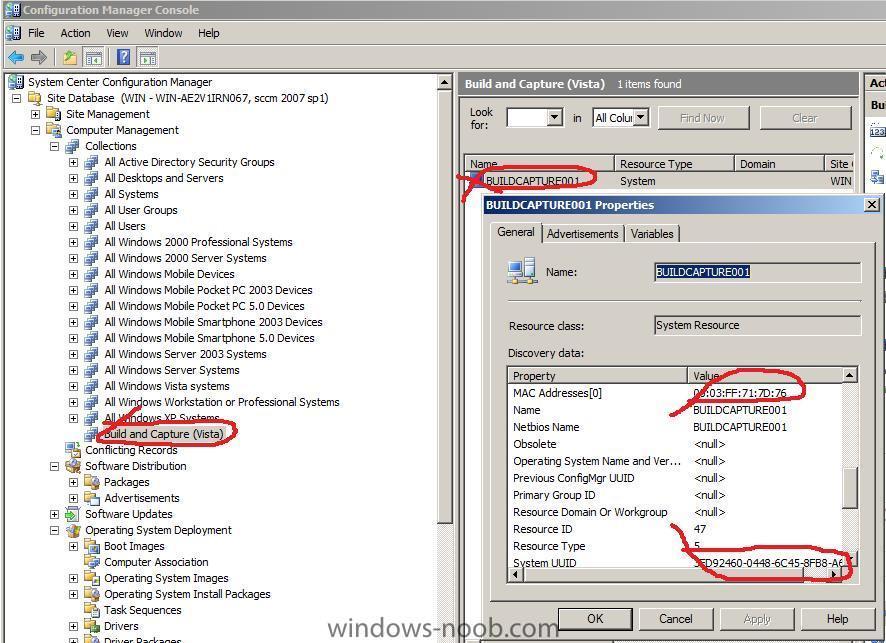

If you want to quickly see the information contained in a particular view, just right-click on it and click on Select Top 1000 Rows
#Clear mac address from sccm windows 10#
Shows only Name and OS relevant info from Windows 10 workstations Exploring SCCM DB in SSMS

Shows only Windows 10 workstations SELECT Name0,Operating_System_Name_and0,Build01 FROM v_r_system WHERE Operating_System_Name_and0 like '%Workstation 10%' This will show all system with name beginning with XYZ SELECT * FROM v_r_system WHERE Operating_System_Name_and0 like '%Workstation 10%' Here are some ideas : SELECT * FROM v_r_system WHERE Name0 like 'XYZ%' Make sense? Experiment with different possibilities and syntax. The results show only the Name and OS of the system because of the SELECT clause. So what’s the difference with the first one? The query results is now showing only the Win10-01 system since it was specified in the WHERE clause.Change it to a device name existing on your server. This is probably because you don’t have a system named Win10-01. Don’t worry if the query fails on your side.Hit the Execute button or hit the F5 key.In the Query pane, let’s enter the following query.Right-click the database and select New Query.The SCCM database is the one named CM_XXX On the left, expand Database and select your SCCM Database.Let’s see this in action and try our first query : The NULL operator is used to compare a value with a NULL value. The OR operator is used to combine multiple conditions in an SQL statement’s WHERE clause. Eg: NOT EXISTS, NOT BETWEEN, NOT IN, etc. The NOT operator reverses the meaning of the logical operator with which it is used. The LIKE operator is used to compare a value to similar values using wildcard operators. The IN operator is used to compare a value to a list of literal values that have been specified. The ANY operator is used to compare a value to any applicable value in the list as per the condition. The AND operator allows the existence of multiple conditions in an SQL statement’s WHERE clause. There’s more but this is the one I mostly use Operator Here’s some logical operator that you can use in your queries. OperatorĬhecks if the values of two operands are equal or not, if yes then condition becomes true.Ĭhecks if the values of two operands are equal or not, if values are not equal then condition becomes true.Ĭhecks if the value of left operand is greater than the value of right operand, if yes then condition becomes true.Ĭhecks if the value of left operand is greater than or equal to the value of right operand, if yes then condition becomes true.Ĭhecks if the value of left operand is not greater than the value of right operand, if yes then condition becomes true.

You can add comparison operator to filter your results when you query SCCM SQL Database. Used to combine rows from two or more tablesĬonditions for the query – OPTIONAL – The wildcard character is ‘%’ There are 5 main sections in queries: SELECT, FROM, WHERE, GROUP BY, ORDER BY and JOIN SQL Main Statement SELECT I’ll give you some good resources at the end of this post if you’re interested to go deeper. After, like any other programming language, it will be up to you to improve your skills by experimenting.

Yes, you can build very complex solutions with SQL but we won’t go deep here. I will start by saying that this is a basic SQL example and that I’m not a SQL expert. Doing Query make no harm but can have a negative impact on the server performance. Query SCCM SQL Database Requirementsīe careful when playing with SQL Server Management Studio. If you need to find a piece of specific information, you need to know in which SQL view to look for and most importantly the SQL language syntax.Īfter reading this post, you’ll be able to use SQL to query the SCCM database and if needed, build some nice reports. This is a guide to help you start to find the information you need in the SCCM Database.Īs you may know, all the information gathered by the SCCM agent is sent to an SQL Database. The goal is not to make you an SQL DBA or expert.
#Clear mac address from sccm how to#
In this blog post, we will show you a beginner’s guide on how to Query the SQL SCCM Database.


 0 kommentar(er)
0 kommentar(er)
